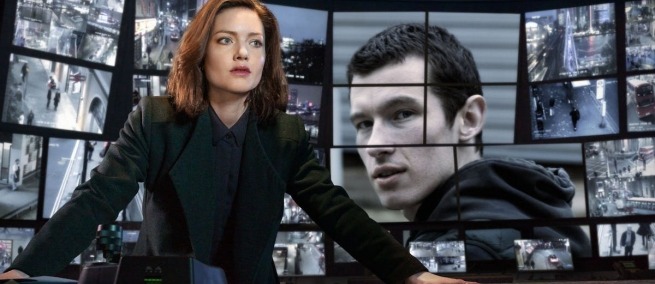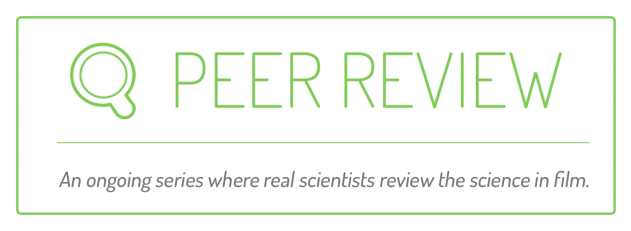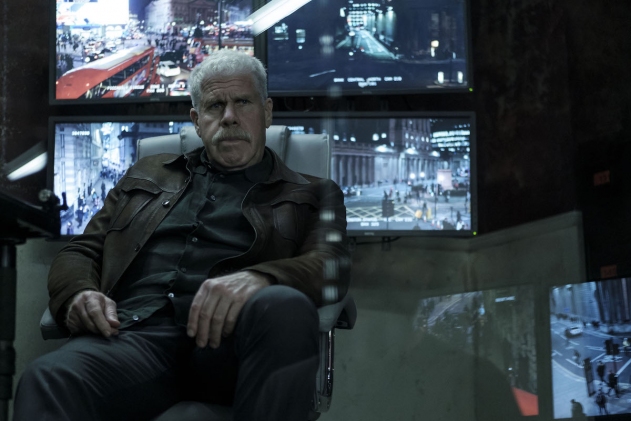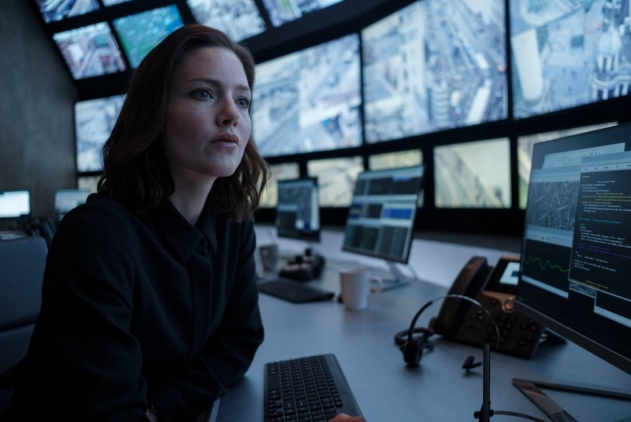

THE CAPTURE is a mystery thriller series, now in its second season on Peacock and BBC One. The British television drama revolves around the importance of audiovisual technology in the collection of primary evidence by law enforcement in criminal investigations.
In the first episode of Season One of THE CAPTURE, closed circuit television (CCTV) footage emerges of Shaun Emery, one of the season’s protagonists, attacking his barrister Hannah Roberts near a bus stop. Her body is later found, and when the last seen video surveillance recording of Roberts places her with Emery, who is a former British veteran who served in Afghanistan, things look grim for him. Emery, who had been accused of killing a soldier at point blank in Afghanistan, had appealed the charges and won the murder case through a so-named “technical timing fault” in the CCTV footage captured in the war setting. But when seemingly undeniable video surveillance surfaces in the Roberts case, it leaves no way for Emery to prove his innocence. But while it is often said that the camera “never lies,” this adage is shown to be false in this episode. In fact, it also no longer holds true in general in our digital age.
Video surveillance has greatly developed in the last 50 years. One of its earliest depictions in movies was in the original BATMAN (1966) starring Adam West, where the Joker, Penguin, Riddler, and Catwoman were featured on a single television monitor in the Gotham City Police Commissioner’s office through video transmission signal. Today, modern video surveillance of control rooms uses dedicated digital video recorders (DVRs). The cameras can be decentralized, they generally do not have a human monitoring them live, and they do not record continuously -- i.e., they can be set off by motion detection or other triggers. In further advances, since 2017, some Internet Protocol (IP)-based cameras have been equipped with software that can conduct automatic biometric recognition, so that for example, in Singaporean shopping malls individual humans can be identified. At present there are over 1 billion surveillance cameras in the world. In some cities CCTV cameras outnumber humans 11 to 1.
In THE CAPTURE there is a team of forensic experts, aptly named “Correction,” who are able to manufacture digital evidence when it is unavailable. They can also take existing digital evidence and manipulate it so that there appears to be no reasonable doubt about how to interpret a given event. The process of “correction” ensures that the courts and the jury can find a defendant “guilty.” In the series, this evidence tampering is usually conducted using a variety of multimedia techniques that can allegedly go undetected by other stakeholders: everything from deep fakes created by generative AI (GenAI), morphing techniques that bring together two different identities to ensure a biometric match of either individual, advanced creative graphical methods embedding gait in another person’s skeletal structure, and the sophisticated editing of images using next generation creative techniques designed for policing and intelligence, tools unavailable to the general public.

Ron Perlman as Frank Napier in THE CAPTURE
Of course, the “Correction” team operates in a morally gray area, insisting that they only “correct” footage through the use of software when they know the person is guilty of committing the crime, but where they are not able to obtain evidence to convict through direct eyewitness accounts or through a warrant process for wiretaps and home searches, or from other kinds of surveillance techniques. So, when law-abiding evidence is missing, “Correction” create evidence through fabrication that will most certainly lead to justice being served to the wrongdoer. It’s equivalent perhaps to police planting a murder weapon in a suspect’s home.
Viewers of Episode 1 of THE CAPTURE will be left wondering whether convicting Emery of Roberts’s murder is the right thing. Regardless of whether the viewer concludes it is the right thing to do in this fictitious scenario -- might the events portrayed in the episode point to a future that requires all of us to wear pin-hole cameras with 360-degree views to ensure an alibi and our own counterevidence? This would be a so-named “live” Jiminy Cricket that broadcasts securely to the web to prove our guilt or uphold our innocence.
What might such a future mean for self-correction, or the prevention of crime? Might people reform if they know they are creating evidence through lifelogging applications? Here we are reminded of the promises of the so-called Metaverse that will be conducting full body mapping and collecting other private and personal details that may well be used to support the conviction of crime. For many, the Internet, and later social media, were the first forms of near real-time data collection on humans. It is also well-known that Facebook and Instagram have become the cheapest investigative tools in the crime solving business. But of course, it’s not all authentic, and corroborating different fields of view (FoV) will be necessary in the future when there is more than one source of CCTV at the scene of a crime. Different FoVs will possibly even create conflicting evidence.
Callum Turner as Shaun Emery in THE CAPTURE
While the idea seems new in THE CAPTURE, it is really a reversal of the plot of THE FINAL CUT (2004) starring the late Robin Williams. Williams plays “The Cutter” who removes evidence of crimes that have occurred from historical video recordings, retained in the memories of deceased persons. This is done so that their reputations remain intact posthumously. In THE FINAL CUT, crimes are removed from recorded video evidence stored on a memory implant that have been captured for feature-length memorials viewed at funerals -- demonstrating that the Correction Team in THE CAPTURE could work to correct or misinform. As with any technology, “dual use” can point to a technique that can be used to “correct” towards a necessary conviction, or one that can be used to evade conviction. If forensics experts can model things that have not occurred in the natural world, then they surely can act to remove evidence captured in the digital world with even greater ease. The question is, can members of the Correction Team be trusted?
One need only consider what is currently occurring on the Internet to extrapolate what might happen if such software got into the hands of the masses. Might the Internet be flooded by sanitized footage where a wrongdoing once had occurred but was augmented? Might historical files emerge with superfluous doctored scenes that have not occurred, causing confusion about actual real-world events? What is truth? How can we be certain of what we see?
We have precedent in the collection of DNA evidence and its use as evidence in a court of law. Since the inception of gathering DNA evidence, and the availability of techniques to analyze it, admissibility of DNA evidence has been linked to the way evidence is stored and collected. Procedures demonstrating a “chain of custody” for DNA evidence have now been created. In the same way, a digital chain of custody will need to be presented for forensic digital evidence, perhaps using a blockchain process. Development of these procedures has already begun. For example, ISO/IEC 27037:2012 provides “guidelines for specific activities in the handling of digital evidence, which are identification, collection, acquisition and preservation of potential digital evidence that can be of evidential value” [[i], [ii]].
In some ways, the movie MINORITY REPORT (2002) pointed to the bottom line, which is that someone needs to be found guilty through legitimate means, not “because some group of people believe it.” In the end, justice must be served, but where the legal system fails to adjudicate appropriately, as in THE CAPTURE, a person’s conscience might ultimately get the better of them. In Episode 6 of Season One of THE CAPTURE, Emery is blackmailed by UK and US intelligence when they adopt 3D modelling to incriminate him and make him look guilty. He succumbs to the blackmail knowing full well he did not murder Roberts but that he did in fact kill the Afghan soldier. In this episode, knowing he got away with the Afghan murder on a “technicality,” he ultimately takes the rap for the Roberts murder because of a guilty conscience. Viewers are left questioning whether “Correction” is indeed a necessity, and whether the outcome can always be this neat.

Holliday Grainger as Rachel Carey in THE CAPTURE
If we believe what is depicted in THE CAPTURE is an example of technology’s looming impact on society, what might this mean for the proliferation of cameras in the context of Smart Cities and how the data being gathered there might be used? Smart Cities not only have image sensors, but have multiple additional sensors that gather audio, among other data types. Tampering can surely be detected post collection -- unless it is edited “on the fly” in real-time as it is captured and stored to a personal device or to the Cloud.
In the end, we are confronted with what this might all mean with respect to the admissibility of audio-visual evidence in a court of law. Courtroom evidence can take on two forms: (1) eyewitness accounts that provide testimony about something that someone has personally seen or heard, described as “direct evidence;” or (2) “circumstantial evidence,” that is, evidence of circumstances that can be relied upon not as being fact directly, but instead pointing to a fact.
The question is what category of evidence does CCTV surveillance footage fall under: is it direct evidence or circumstantial evidence? Does a camera, like a human, have the ability to claim the status of offering a direct eyewitness account, or is the audiovisual data from a camera merely a contribution to circumstantial evidence, forming inference rather than fact?
Most CCTV footage is captured by infrastructure owned and operated by city, public, or private organizations. Police forces generally do not fund or operate such assets but rely on third parties to provide access on a need’s basis, “on-demand”, usually accessed shortly after an event has taken place. For these reasons audiovisual surveillance is often seen as infallible. But it is subject to shortcomings.
First and foremost, most CCTV only captures video. Second, some CCTV only captures still shots in the form of images “frame by frame” and only in black and white. Third, even if video is continuous, the feed only has a given “field of view” and can be subject to other defects such as poor lighting, obstruction, or other shortcomings. Fourth, audiovisual footage stemming from a mobile device such as a smartphone, in-car camera, or drone, may not offer a uniform and consistent perspective.
One of the problems associated with audiovisual footage are gaps in the recording, either due to line-of-sight issues, or because the activity in the event partially exits the field of view limitations of a camera. From the perspective of the prosecution, any details that miss key acts of provocation by an offender may negatively impact a clear judgment on a given case. Yet the aim of using CCTV is to reduce or remove reasonable doubt altogether.
CCTV footage usually, but not always, provides over-sight and does not capture images at ground level like body-worn cameras. Recording devices are hoisted onto a lamppost, building wall, or fixed structure, providing a bigger field of view. At times, dependent on the context, CCTV footage may omit defensive movements by a plaintiff or aggressive outcomes or actions by a defendant.
So, while seen as infallible, either damning or exonerating suspects, video surveillance evidence is not foolproof. This is despite the fact that manufacturers of more advanced CCTV deployments today claim to even be able to conduct real-time facial profiling through firmware in the CCTV camera itself. When images from CCTV are taken at nighttime in dimly lit areas or wet conditions, they may be blurry and require forensic experts to carry out the identification of suspects, using advanced facial and body mapping techniques. But the intervention of technology experts can increase the potential for error because experts are interpreting an AI-interpolated overlay, rather than raw footage. When a prosecution team cannot prove that the defendant is guilty “beyond a reasonable doubt,” then the raw footage gathered of the case in question may require “correction."
One thing that THE CAPTURE does ignore is the reality of tampering that can be determined by forensic experts using time and date stamps among other metadata captured at the time of recording. Without this proven chain of custody, doctoring of audio, images, and video can be assumed to have taken place. Doctoring is a process defined as: “the action of changing the content or appearance of a document or picture in order to deceive; the act of falsification.” In essence, if any party involved in a crime alters, or attempts to destroy, evidence, it may be reasonable to infer that the party had "consciousness of guilt" or other motivation to avoid the evidence. Thus, it can be determined that the evidence might have been a spoliator. When police are the party doing the spoliation, by confiscation or destruction of photographs, the police’s act of destroying the evidence may be prosecuted as an act of evidence tampering.
In the end, we are being called to think about the impacts of modern technology on society. The falsification of evidence is interfering with justice, the act is known as “spoliation of evidence,” and such spoliation renders potential evidence invalid from the outset. One cannot alter evidence through intentional fabrication or negligence (i.e., recklessness), as tampering is seen as an obstruction of justice or perverting the course of justice with the clear intent of covering up a crime or making someone who is innocent look guilty. If “Correction” stands for the very best intentions of law enforcement, then are the acts they are engaged in “all good?” Is there anything like a “white lie?” How can the very people who are the bastion of justice be the same people who obstruct justice?
¯
[i] https://www.iso27001security.com/html/27037.html
[ii] https://www.unodc.org/e4j/en/cybercrime/module-4/key-issues/standards-and-best-practices-for-digital-forensics.html
TOPICS